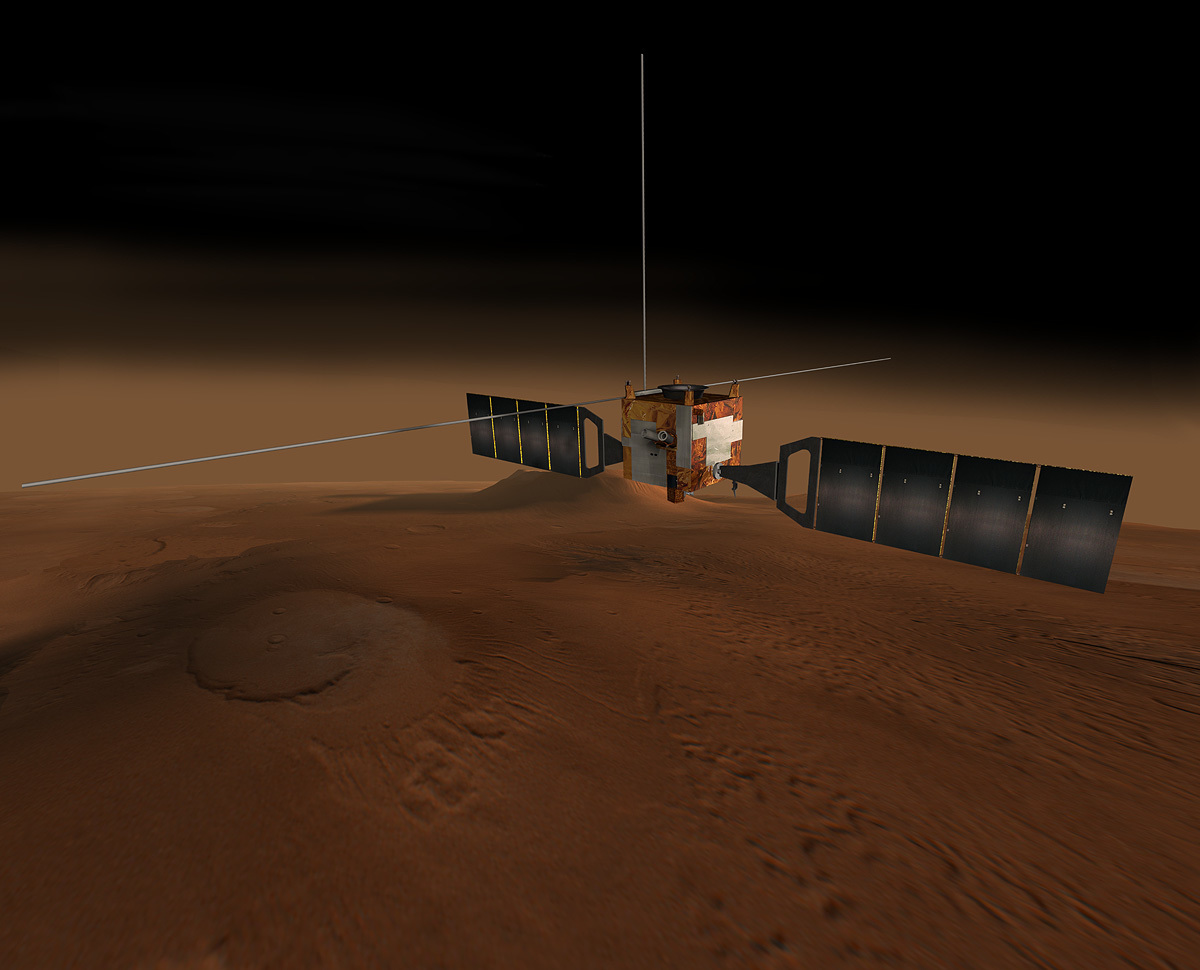
NASA is participating in a mission of the European Space Agency and the Italian Space Agency called Mars Express, which has been exploring the atmosphere and surface of Mars from polar orbit since arriving at the red planet in 2003. The spacecraft carries a science payload derived in part from European instruments lost on the ill-fated Russian Mars '96 mission, as well as a communications relay to support lander missions.
The mission's main objective is to search for sub-surface water from orbit. Seven scientific instruments on the orbiting spacecraft have conducted rigorous investigations to help answer fundamental questions about the geology, atmosphere, surface environment, history of water, and potential for life on Mars. Examples of discoveries - still debated by scientists -- by Mars Express are evidence of recent glacial activity, explosive volcanism, and methane gas.
Initially, Mars Express also carried a small lander called Beagle 2, named for the ship in which Charles Darwin set sail to explore unchartered areas of the Earth in 1831. The lander was lost on arrival in December, 2003.
NASA's involvement with the mission includes joint development of a radar instrument called MARSIS - short for the Mars Advanced Radar for Subsurface and Ionospheric Sounding - with the Italian Space Agency. MARSIS has already provided information about features beneath the Martian surface, including buried impact craters, layered deposits, and hints of deep underground water ice.
NASA's involvement also includes coordination of radio relay systems to make sure that different spacecraft operate together; a hardware contribution to the energetic neutral atoms analyzer instrument; and backup tracking support from NASA's Deep Space Network during critical mission phases.


